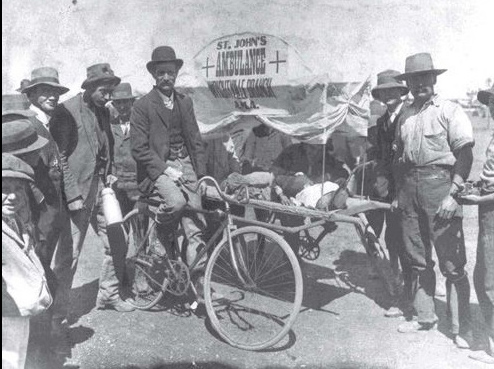The ambulance has taken many forms over the years. Everything from the simplest form of two sticks carried between two men clearing the battlefield to the modern day rolling hospitals we have today. WE wanted to take a look at some of the different variations used and we thought the perfect place to start was with bicycles.
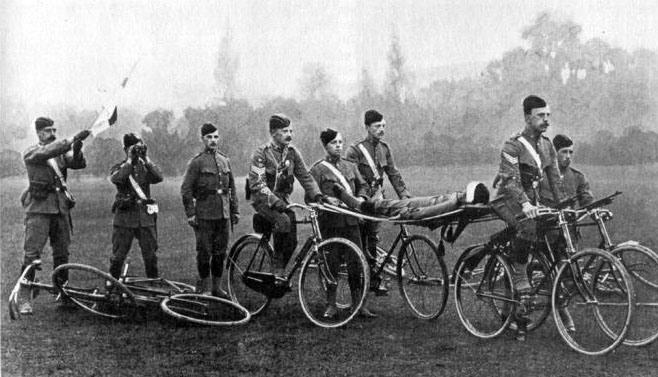
Photo: thecabe
The bicycle ambulance was really put to use in World War I but it there is records of it being used as early as the late 1800’s also. Even though the bicycle was technically invented in 1817 by German Baron Karl von Drais in its early form it was more like a walk along bike you would give a toddler. They didn’t start getting pedals to provide power till much later on.
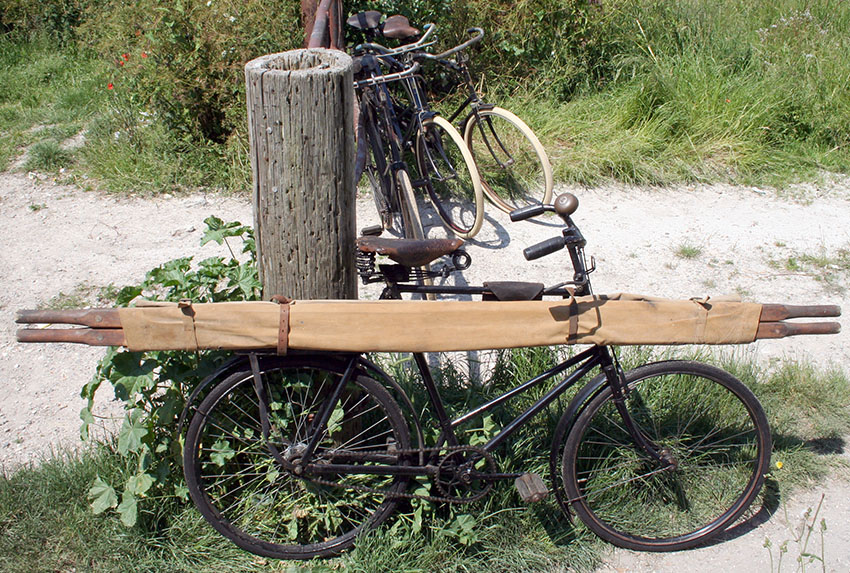
Stretcher rolled up and attached to a single bike
Photo: oldbike
As you might’ve noticed there really wasn’t much to the bicycle ambulance. It was basically two sticks connected with canvas so it could be rolled up and attached to the side of the bike when not in use.
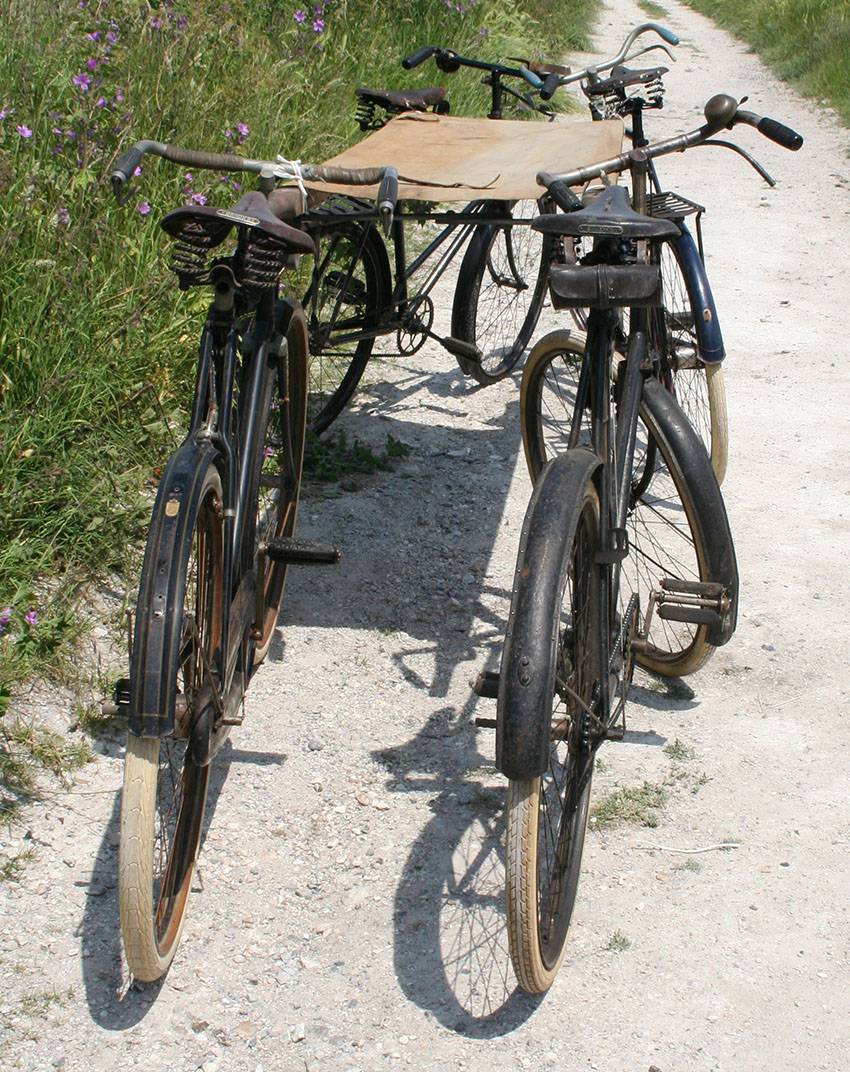
Photo: oldbike
They even had crews of four that would link up to carry the wounded. One of the bikes would have to carry the long and awkward stretcher on the side of his bike in route to the wounded, then they could just roll out the stretcher and link it to the four bikes and off they’d go.
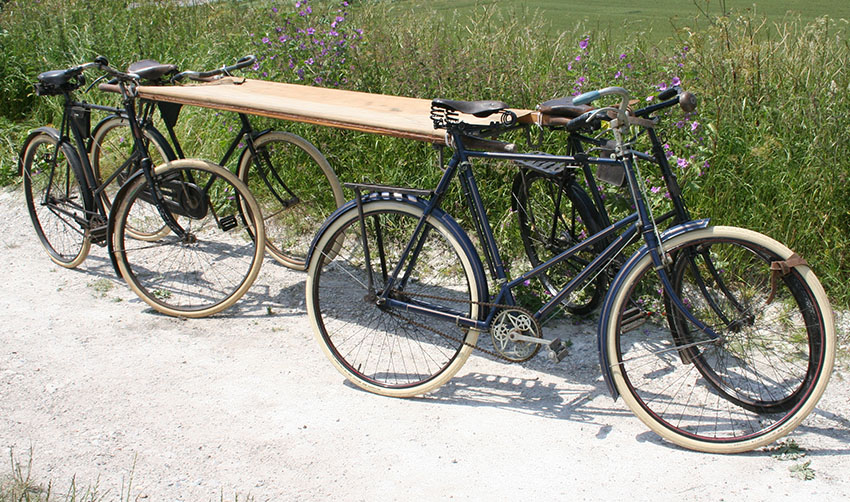
Photo: oldbike
In a pinch, it could be done with just two bikes which was no big deal if you were walking the bikes along using it as a cart I guess you could say.

Photo: oldbike
However, can you imagine how difficult it must’ve been to try and ride the bikes with stretcher strapped between you and another bike? Especially in the middle of a war, these crews must’ve been fearless.
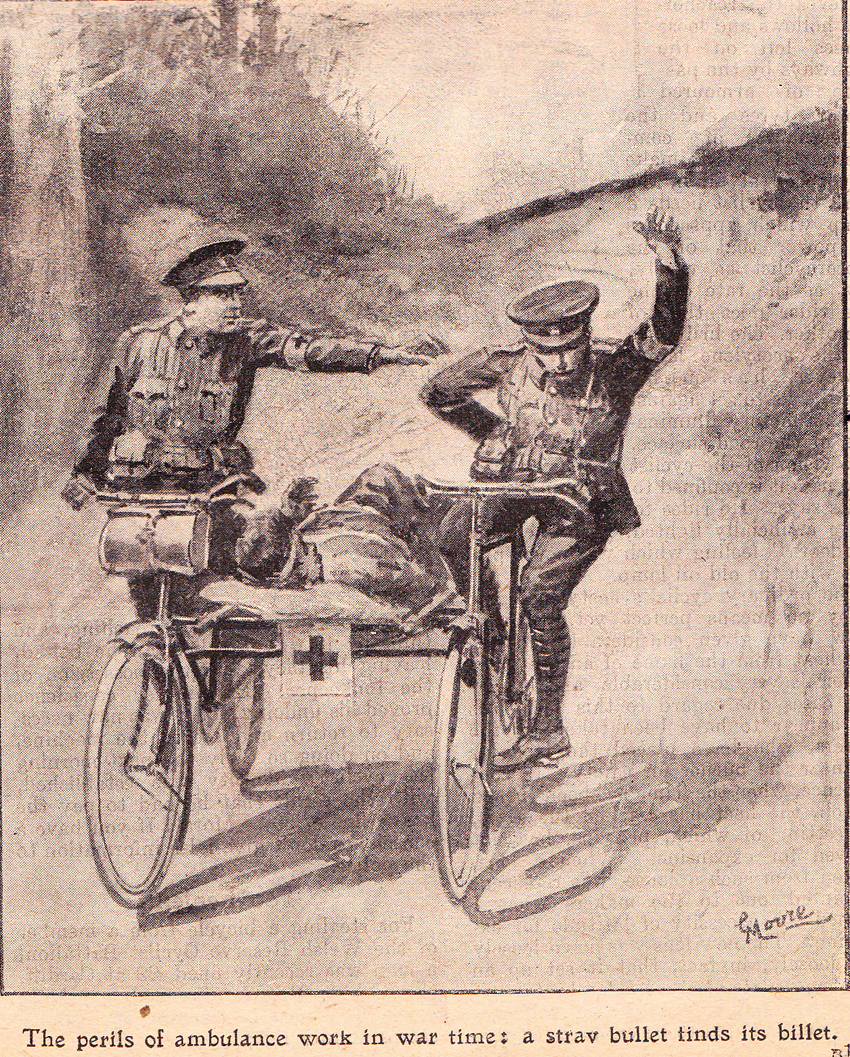
Photo: oldbike
This was known as the Tandem Ambulance and some reports give credit of its design, at least in America, to a man named John T. Hinkley who was a Physician in Chicago.
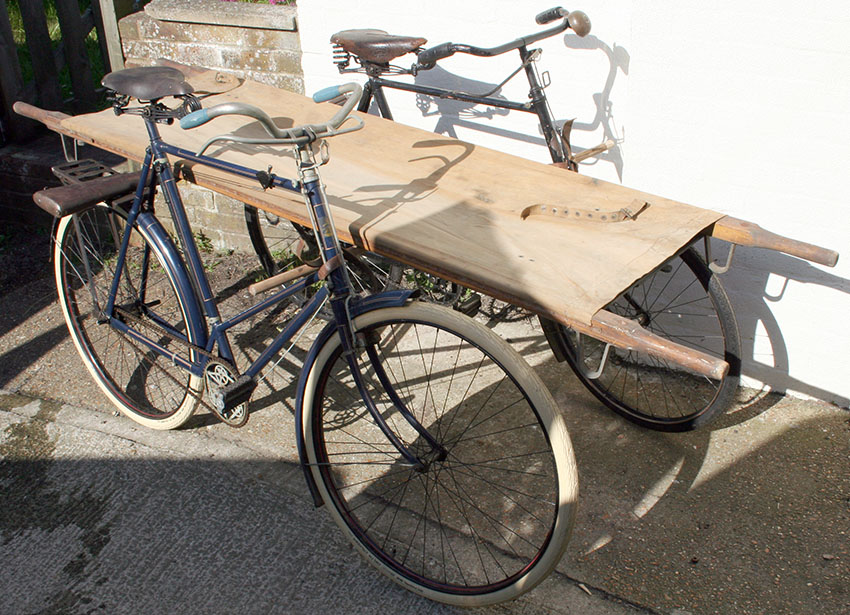
Tandem Ambulance
Photo: oldbike
Apparently, he felt it took the horse drawn carts too long to respond in emergency type situations. This was because the hospital didn’t have horses on site so they would have to contact the stables where the horses were kept before they could respond.
The Tandem Ambulance was actually very efficient, this was mainly because two qualified physicians were the ones riding the bikes. So they could tend to the patients as they were heading back to the hospital. They apparently brought more than 100 patients in a few short months.

Photo: oldbike
…War has its horrors, and, as provision for the wounded, stretcher-bearers are attached to the rear guard, carrying portable and collapsible stretchers. One cyclist is stationed at each corner of the stretcher upon which their unfortunate comrade is reclining, secured to the saddles of the two leading bearers and upon the handlebars of those in the rear. In cases of emergency, when the staff stretcher is not available, a hurdle or gate is improvised.
– ‘Soldiers on Cycles
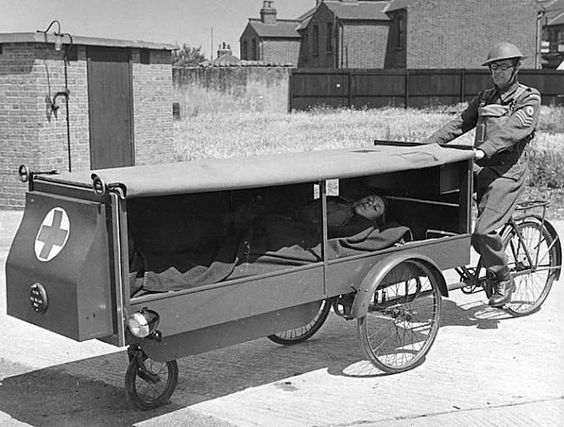
Said to be somewhat more modern version of the Bicycle Ambulance of WWII
Photo: pinterest


